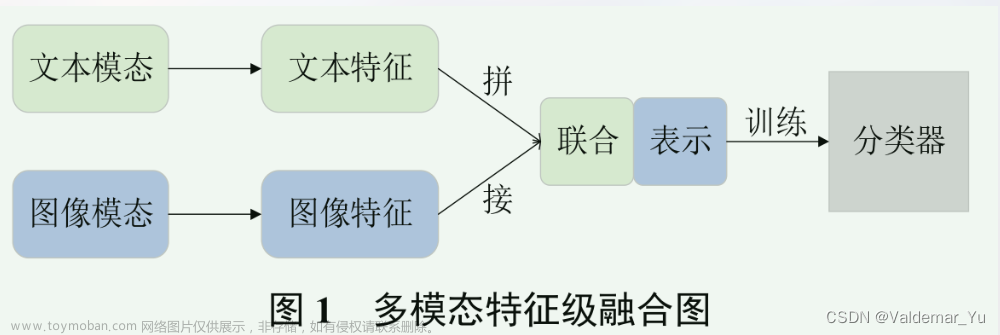Title
VLMo:Unified Vision_Langugae Pre-Training with Mixture-of-Modality-Experts文章来源:https://www.toymoban.com/news/detail-742463.html
Motivation
- CLIP和ALIGN都采用dual-encoder的方式分别编码图像和文本,模态之间的交互采用cosine similarity ,这种方法对retrieval tasks(检索任务)及其有效;但是如此shallow intersection between images and text is not enough to handle complex VL classfication tasks. In ViLT, find that CLIP gives a relatively low accuracy on visual resaoning(VR) task; 后来一系列的tasks,采用的fusion encoder 的方式,即一开始分来images and text 然后采用transformer的encoder 做cross-modal 的intersection,这样的architecture 弥补了dual encoder architecture的drawback,But it requires to jointly encode all possible image-text pairs to compute similarity scores for retrieval tasks. The quadratic time complexity leads to a much slower inference speed than the dual-encoder models models whos time complexity is linear. So, 有没**有一种融合上述两种架构的方法呢?**做检索任务的时候用 dual-encoder架构,做classfication的时候用fusion encoder,所以本文提出了Mixture-of-Modality-Experts
- VLMo的训练loss是image-text contrastive(ITC), image-text matching(ITM), masked Language modeling(MLM)和ALBEF是一样的。提出了一个stagewise的预训练方法分别vision 和NLP中的large-scale corpus:首先在vision上训练好,再预训练language experts on text-only data,最后将模型用于vision-language pre-training。
Contribution
- 模型上的改进:Mixture-of-Modality-Experts
- 训练方式上的改进:分阶段模型预训练
Model
 文章来源地址https://www.toymoban.com/news/detail-742463.html
文章来源地址https://www.toymoban.com/news/detail-742463.html
- 模型中所有的multi-head self-Attention都是share weights的
- 模型inference的时候很灵活,要做那个任务,切换到那个架构上就行。
- 分阶段训练策略

Expertiments
- 比ALBEF性能好很多
- 在更大的数据集上训练,数据变得更好。
Summary
- 就是把transformer里的encoder中的FFN分为了几个FFN
到了这里,关于多模态论文阅读之VLMo的文章就介绍完了。如果您还想了解更多内容,请在右上角搜索TOY模板网以前的文章或继续浏览下面的相关文章,希望大家以后多多支持TOY模板网!





![[论文阅读]MVX-Net——基于3D目标检测的多模态VoxelNet](https://imgs.yssmx.com/Uploads/2024/02/728981-1.png)








